The Chaos of Rocks
Hello World!
I’m Professor Chuck Bailey and this is the inaugural post for the William & Mary Structural Geology & Tectonics Research Group. Our group consists primarily of undergraduate researchers working on original research projects, and in the coming months these students will highlight their research findings in this blog. The objective is to communicate our research discoveries to a broad audience as well as to illustrate both the joys and frustrations associated with original research.
Structural geology & tectonics are scientific disciplines that focus on understanding deformation of earth materials and the internal architecture of the Earth. These studies range from the detailed scale (the internal structure of individual mineral grains) to the grand (the structure of entire mountain ranges). We commonly incorporate aspects of petrology, sedimentology, geochronology, and geomorphology into our research.
Our study sites range from the nearby (central Virginia and the Blue Ridge Mtns.) to the more distant (e.g. the Rockies, Norway, and Oman) to the extraterrestrial (Europa, Mars, and Venus). We commonly make maps, and 3D models to help answer specific questions about the geological structures we seek to understand. Lab work typically involves quantifying the mineralogy, rock chemistry, and microstructures preserved in deformed rocks.
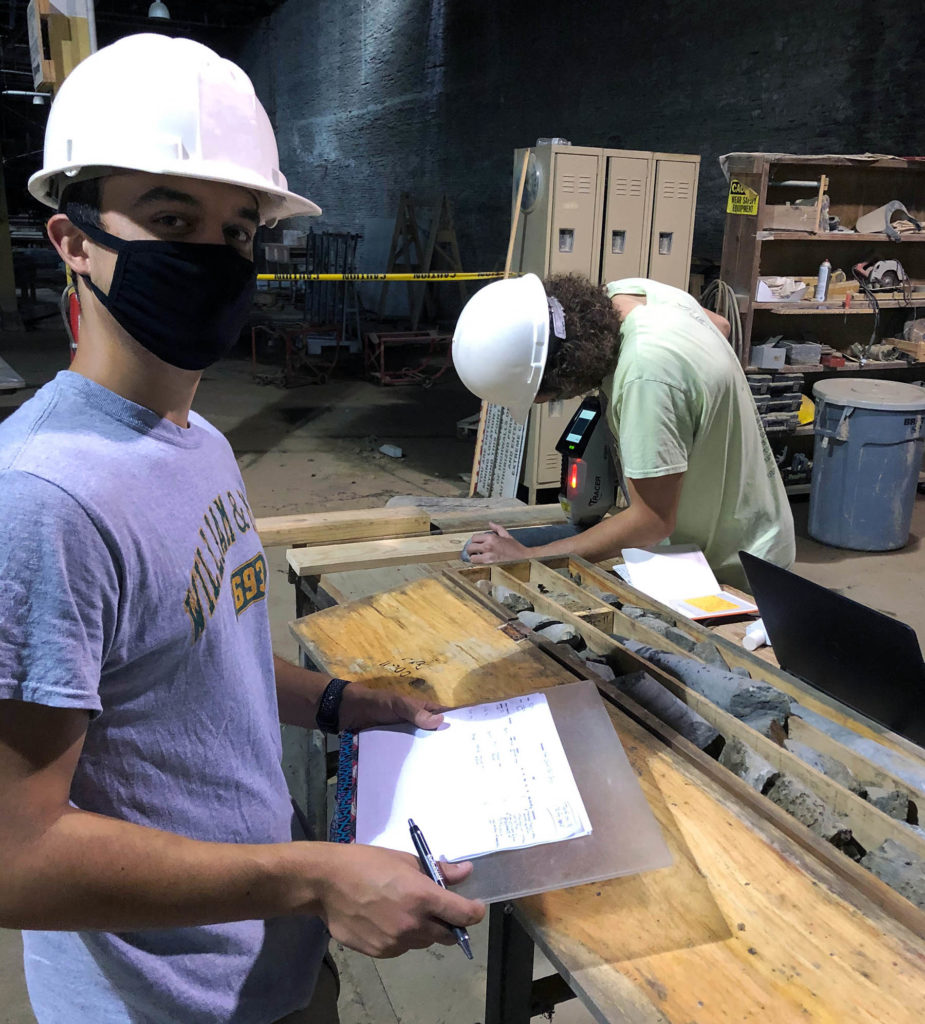
Gabe Mojica (W&M Geology ’21) and Paul Volante (W&M Geology ’20) log rock core from the eastern Blue Ridge Mountains, Virginia. Paul is using a handheld XRF to measure rock chemistry.
The William & Mary Structural Geology & Tectonics Research Group began in 1996 and by 2020 it’s included more than 160 undergraduates. We’re a collaborative group, as doing science as part of a team is rewarding. Over the past two decades, we’ve presented more than 120 papers and posters at scientific meetings, published dozens of journal articles and geological maps, and led numerous geological field trips for professionals and the public to showcase these advances.
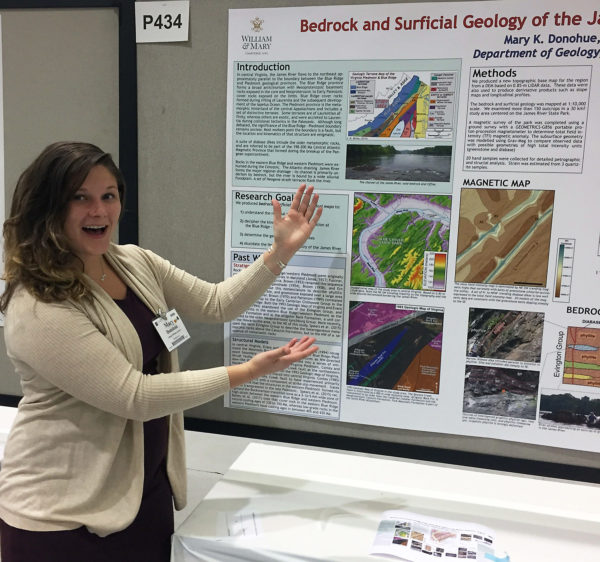
Mary Donohue (W&M Geology ’17) and her research poster at the 2017 Geological Society of America meeting in Seattle, Washington.
The group’s logo blossomed in 2007. Alums from the SG&T group have gone on to diverse careers, although most have earned advanced degrees in the sciences and work as researchers, engineers and academics. Others have gone on to great success in business, education, and law; whereas others flourish as artists, preachers, and pilots.
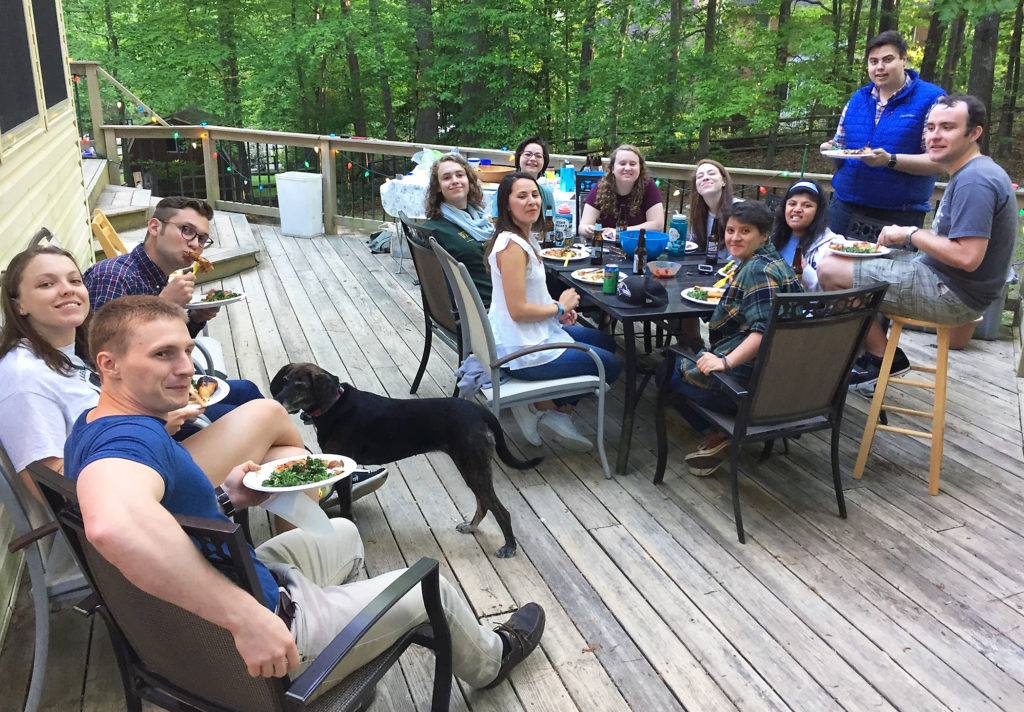
The 2017 & 18 Structural Geology & Tectonics Research Group enjoying a meal together in May 2018 (note the hound dog for scale!).
This year’s research team includes a dedicated group of six senior geology majors who are working on individual and independent research projects. They’ve adjusted to the craziness of the COVID-19 era which has placed many obstacles along the research path. The traditional methods of field and lab work are more difficult in this physically distanced time.
Charles Darwin, when reflecting upon his travels and studies while on the voyage of the Beagle (1831-36), noted:
“On first examining a new district nothing can appear more hopeless than the chaos of rocks; but by recording the stratification and nature of the rocks and fossils at many points, always reasoning and predicting what will be found elsewhere, light soon begins to dawn on the district, and the structure of the whole becomes more or less intelligible.” (the bold italics are my doing, but the words are Darwin’s)
The William & Mary Structural Geology & Tectonics Research Group relishes the chaos of rocks and its ongoing research continues to make the structure of the Earth intelligible. Join us on that journey of discovery.

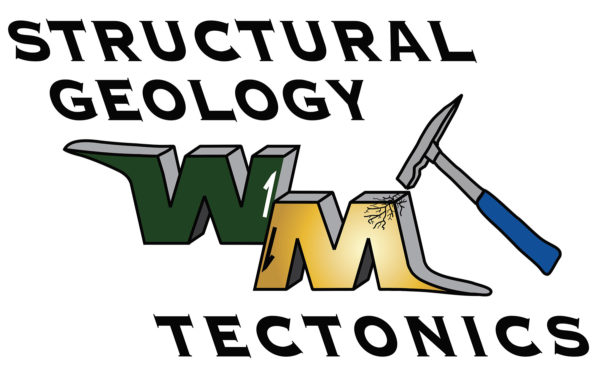
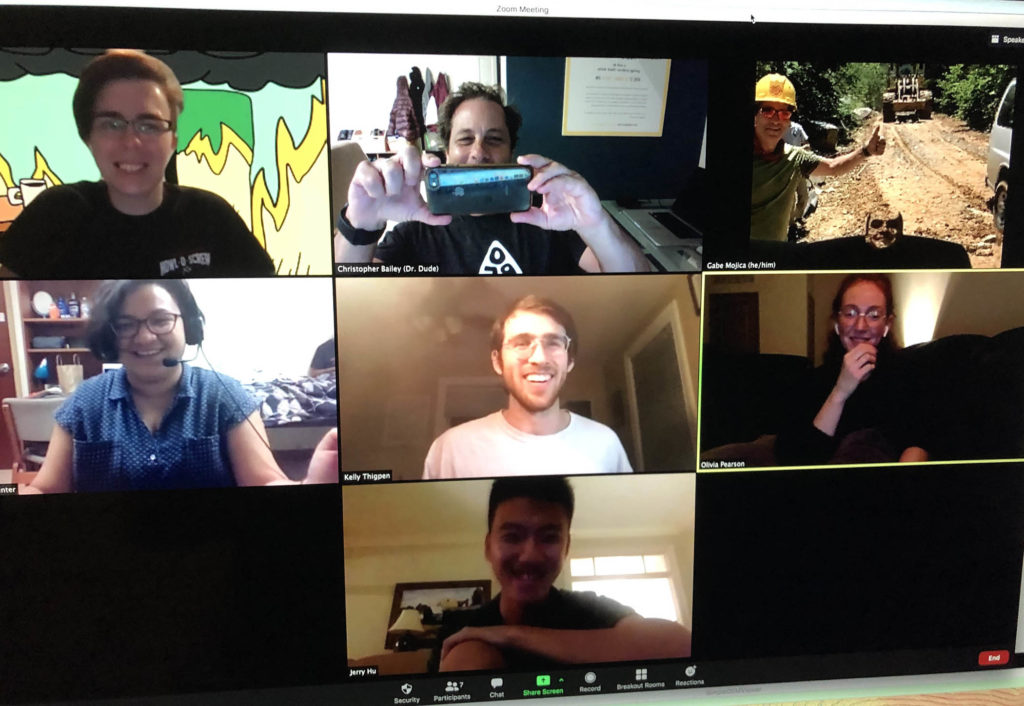

No comments.
Comments are currently closed. Comments are closed on all posts older than one year, and for those in our archive.